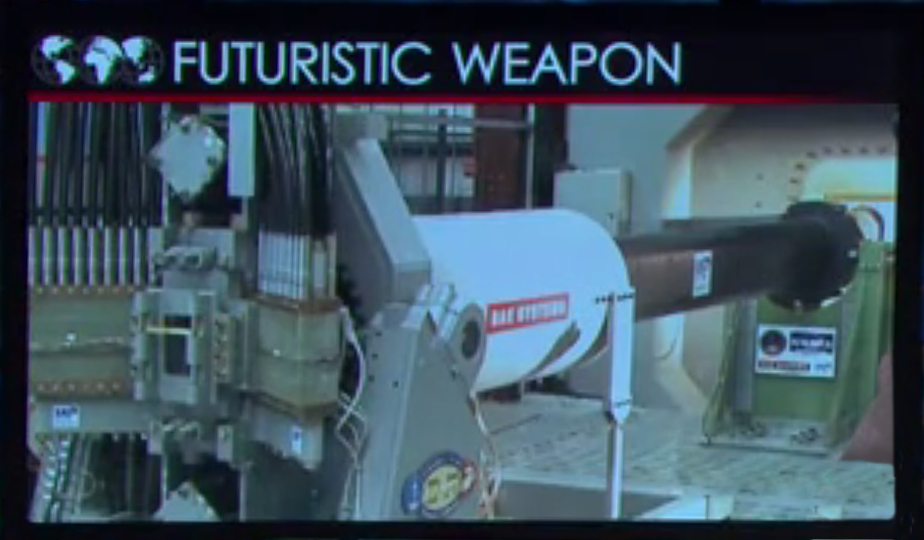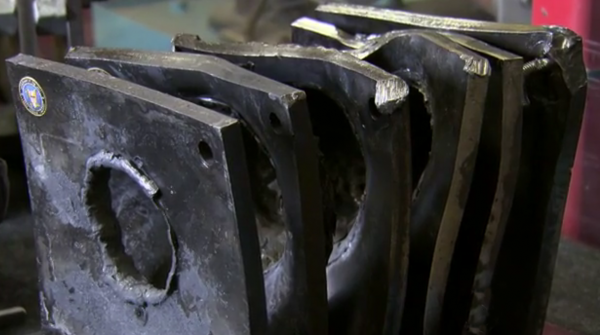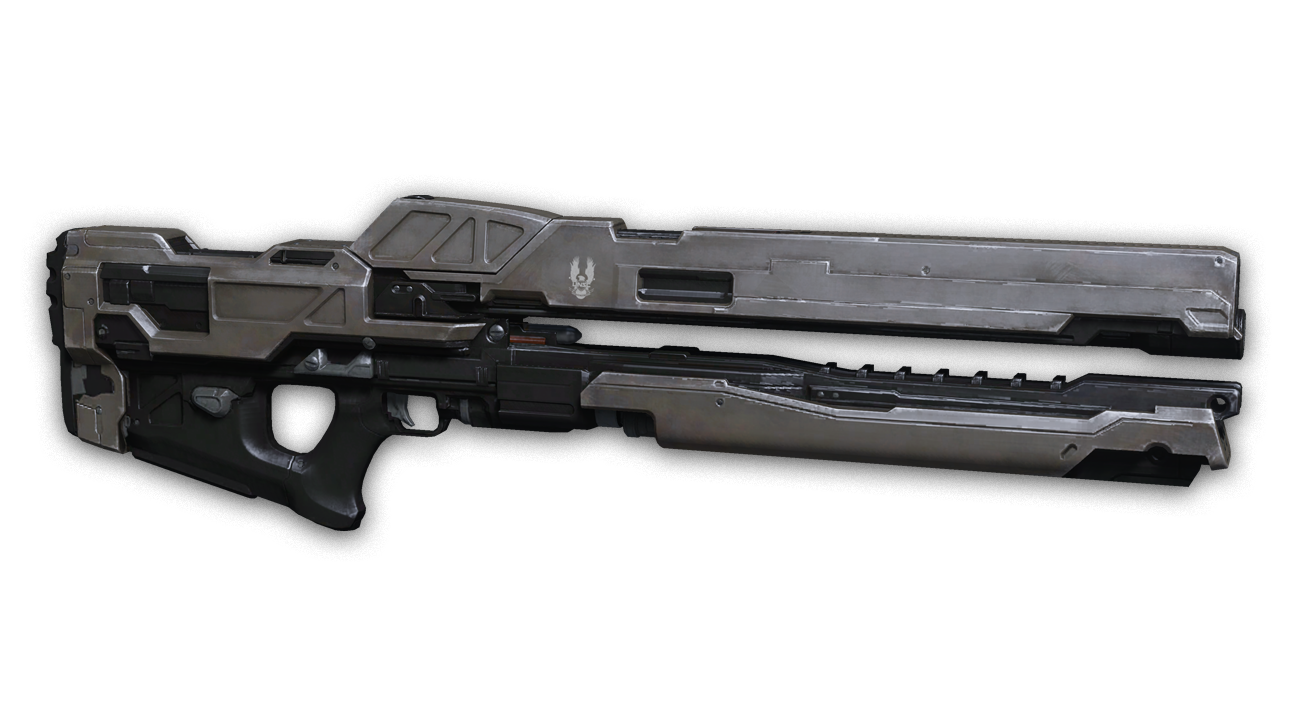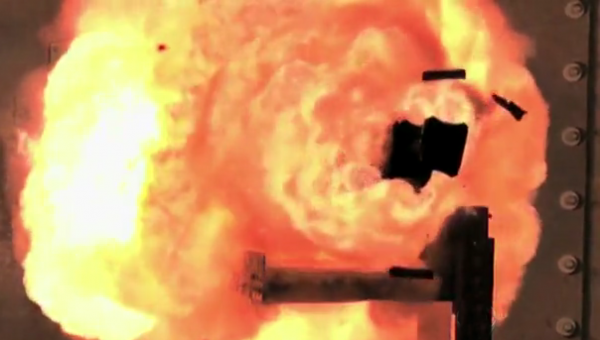I happened upon some amazing news about a new Railgun that the U.S. military is testing. I had known that railgun technology had been around for a few years, but now it’s on the brink of actual use and not in the development stage.
During this article we’ll explore the fiction side of Railguns and their tech in the Halo universe, versus the real-world application of this technology, as well as their similarities and differences.
Disclaimer: I’m not a scientist or engineer. I may state some things incorrectly.
Now on with the article!
Fiction:
The railgun in Halo was introduced to us in Halo 4. Let’s not mistake this with the MAC (Magnetic Accelerated Cannon) on starships, nor the gauss cannon found on some Warthogs.
The Asymmetric Recoilless Carbine-920 or Railgun is a “compact-channel linear accelerator that fires a high-explosive round at incredible speed, delivering kinetic and explosive force to both hard and soft targets alike”. Alternately, it can also be described as an electro-magnetic projectile weapon.
Some technical specs for the Railgun are:
Manufacturer: Acheron Security
Ammunition Type: M645 FTP-HE 16 mm x 65 mm
Ammunition Size: 16mm x 65mm
Size:
Length: 110.8 centimetres (43.6 in)
Height: 31.9 centimetres (12.6 in)
Width: 7.4 centimetres (2.9 in)
Weight: 14.9 kilograms (33 lb)
Charge Time: 2 seconds, lesser charge time will cause less damage
The Halo 4 Railgun has no zoom feature while shooting. The projectile follows along dual channels (metal “rails”). These are charged by an electric current that flows through the magnetic rails. This interaction is what fires the projectile at high speed.
Though the handheld Railgun in halo 4 is labeled as “recoilless”, it actually has recoil, likely to show the weapon’s destructive force.
Fact:
In a report from CBS news/Reuters by David Alexander, it’s stated that the U.S. Navy is planning trials for it’s railgun in 2016. This version of the railgun can fire a 23 pound projectile at seven times the speed of sound and can travel well over 100 miles. To break that down, the speed of sound is 1,125 feet per second or 767 miles per hour. Seven times that is 7875 feet per second (just slightly under 1 1/2 miles per SECOND!) or 5,369 miles per hour. That is some POWER! Rear Admiral Matthew Kluder, chief of Naval Research has stated that the railgun has already gone through testing on the ground. The above picture shows a prototype of the current version of the railgun set up in a testing lab to test it’s firepower.
Rear Admiral Matthew Kluder, chief of Naval Research has stated that the railgun has already gone through testing on the ground. The above picture shows a prototype of the current version of the railgun set up in a testing lab to test it’s firepower.
Part of the reason for developing railgun technology is technical superiority as well as cost. The planned 23lb projectile for the sea-based railgun will cost about 25,000. This is vastly cheaper that the average 500K to 1.5 million dollars (US) per conventional missile in use today.

Above shows the lab railgun’s length (in a fishbowl view).
“Railguns use electromagnetic energy known as the Lorenz Force to launch a projectile between two conductive rails. The high-power electric pulse generates a magnetic field to fire the projectile with very little recoil, officials said.”
“Current projectiles leaving a railgun have a muzzle energy of about 32 megajoules of force, said Rear Admiral Bryant Fuller, the Navy’s chief engineer. He said one megajoule would move a one-ton object at about 100 mph” Again, the current projectile is only 23 pounds versus the stated 2,000 pounds. So that’s just over 1% of the weight and 32 times of force. POWERFUL!!!
To illustrate this, the picture below shows the destructive force of an even smaller real-world projectile through a railgun. Though not said, the smaller projectile looks to be no more than a few pounds in weight. This is relative to the Halo 4’s projectile.
 What you’re looking at above are SIX 1/2 inch thick steel plates that have had a several inches wide hole PUNCHED through them.
What you’re looking at above are SIX 1/2 inch thick steel plates that have had a several inches wide hole PUNCHED through them.
Check out this video of the real-world railgun in action! (link submitted by Kevin Armstrong-Thanks Kev!)
https://www.youtube.com/watch?v=vHS1ZiFJjB8
Summation
The technology for the real-world railgun is very similar to the tech represented in Halo 4’s railgun. The major difference being that we in present time have not yet reduced the size of the gun itself for individual use.
Given the size of the projectile in the Halo 4 railgun, coupled with the power associated with the electromagnetic current, it is quite evident that the destructive force of the Halo 4 railgun is accurately depicted in game.
So not only is this tech possible, it’s REAL and right NOW!
-Sal



Remind me not to make any Navy guys mad… But that is one SCARY weapon.
Heh, I LOVE it! Now hopefully some jerk wad doesn’t give up the tech to another country or terrorists… Some things just should NOT be shared.
Great article Sal. I remember hearing about this some time ago. The prototypes were all so big that they could only be used on Battleships. At its core this is a kinetic round weapon. The M1 Abrams tank (my baby, TYVM) uses it to kill other tanks. I have seen it penetrate a 6 inch armored turret and go out the other side, sucking everything alive out the exit hole. The power is awesome.
This? This beats it by more than a country mile. The only problem is going to be stabilization for accuracy, but I have no doubt that someone will come up with a solution.
Whatever that hits is going to be in a WORLD of pain.
There is a video of one of the more recent tests up on one of the industry partner’s (BAE Systems) YouTube account.
https://www.youtube.com/watch?v=vHS1ZiFJjB8
Pretty awesome high speed camera shots showing the new aerodynamic round too. If you are wondering what all the stuff coming off of it as it leaves the barrel, it is a sabot to make the round match the diameter of the barrel.
At the end they show a clip of the Joint High Speed Vessel (JHSV) which is planned to be the testing platform. From what I have read, the JHSV will not carry it beyond testing. JHSVs are basically militarized ferries to carry company-sized Marine and Army units with their vehicles and don’t carry weapons themselves. In this case one appears to be available and have a large space to test from so that’s why they are using it.
One interesting thing from the artist’s concept at the end of the video is that the gun and it’s mount are not enormous as ship weapons systems are measured. It might be possible to retrofit the gun to existing ships (Arleigh Burke class destroyers come to mind) if they can produce energy fast enough to charge the capacitors on it in a timely manner. In that respect it really is kind of like a MAC. It has to charge before it can fire.
On a side note, the next class of aircraft carrier (Gerald R Ford-class) will use an Electromagnetic Aircraft Launch System (EMALS) to launch aircraft instead of a steam catapult. EMALS works on the same principal as the railgun too.
Pingback: Halo Concept Art: Reach Weapons | HaloFanForLife